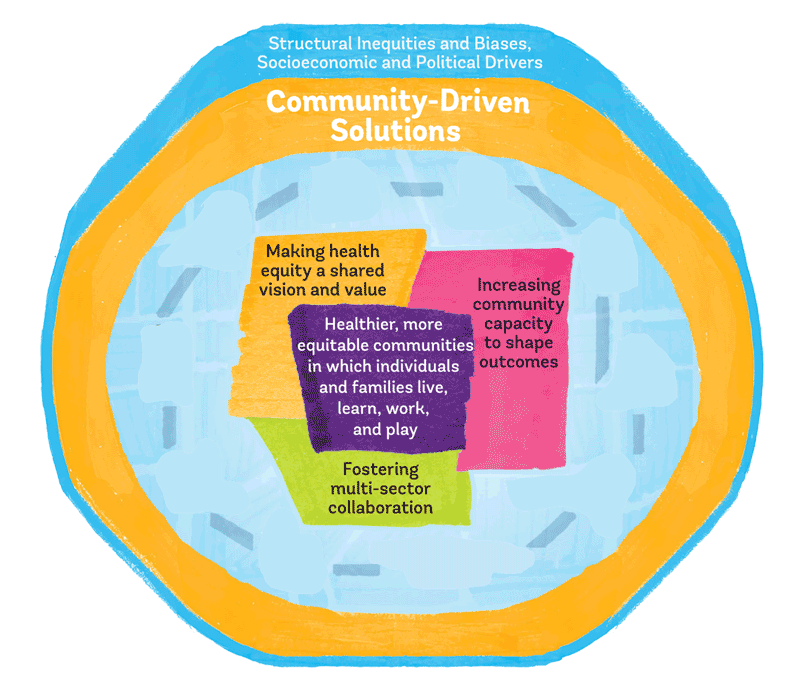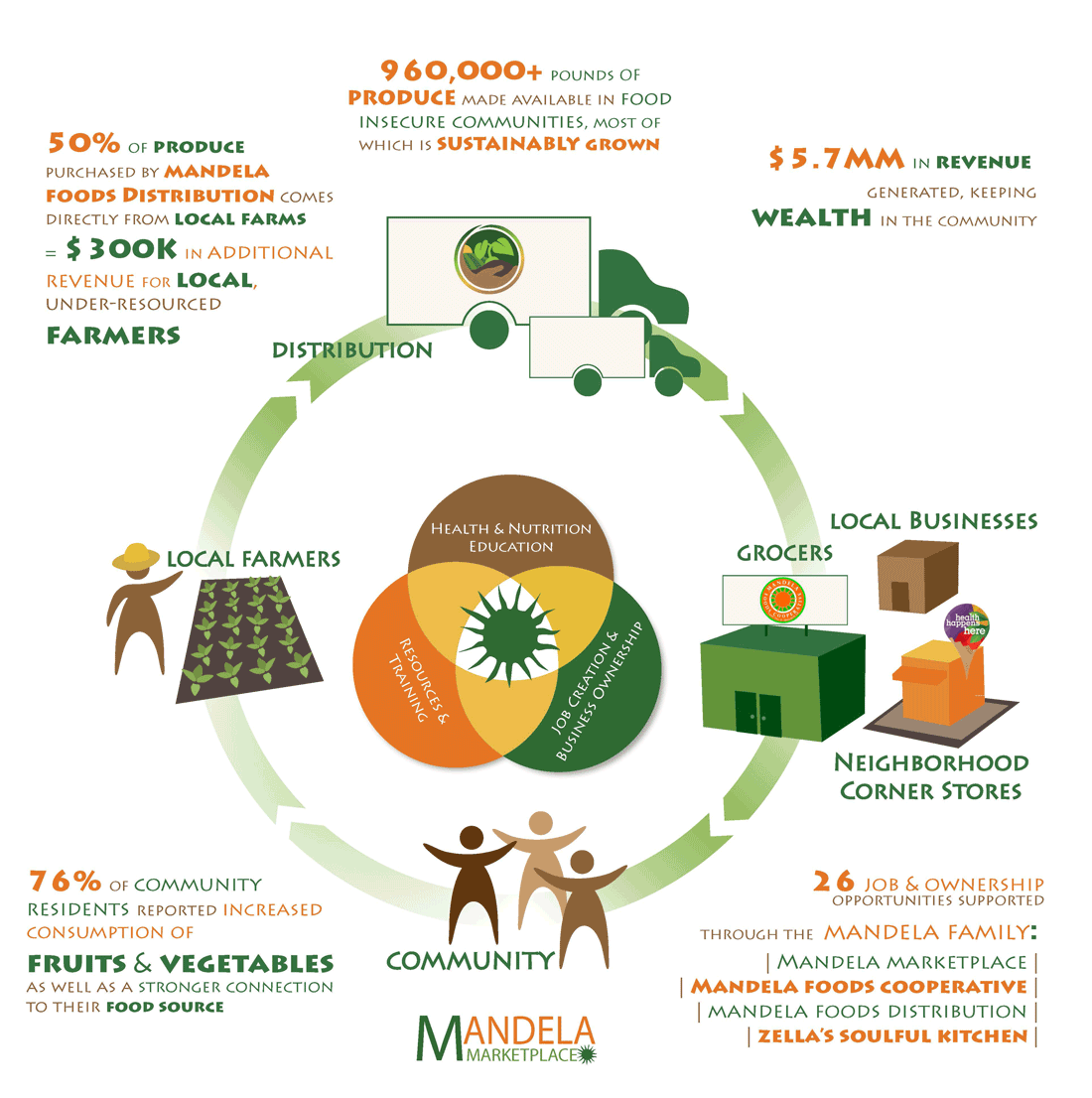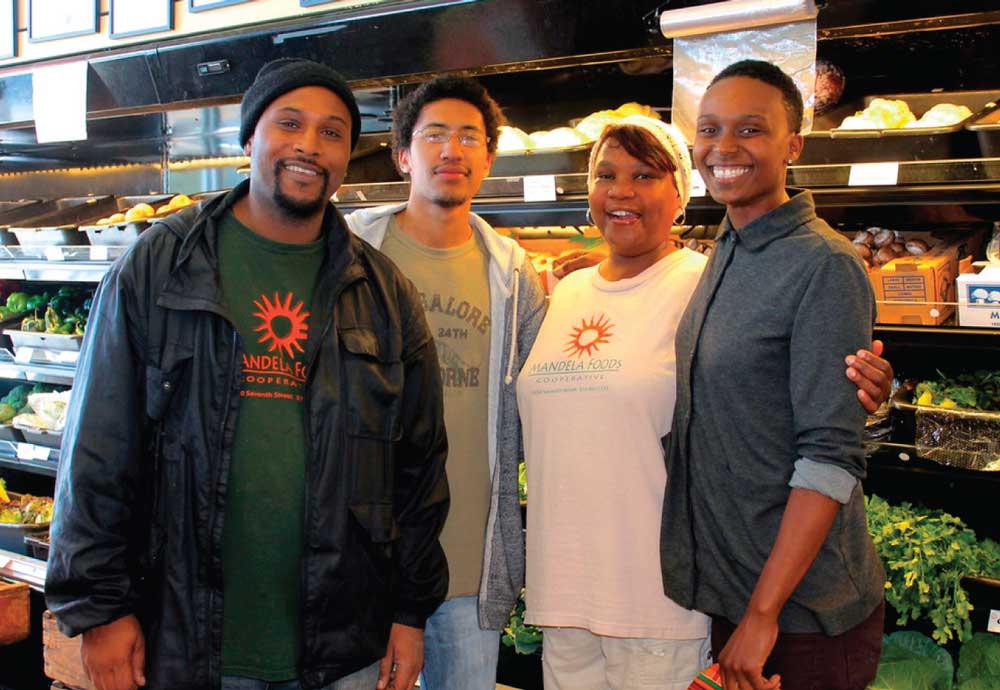Community-driven solutions can take into account the range of factors that contribute to health inequity in the United States, such as income and wealth or employment. These factors are the social determinants of health. The Mandela MarketPlace example below works in the areas of physical environment, employment, income and wealth, and social environment.

Mandela MarketPlace, based in West Oakland, CA, works with local residents, community-based businesses, and family farmers to create sustained economic development by investing in a host of local solutions to food system challenges.

Mandela’s programs work to increase food security, expand local employment opportunities, and build wealth for individuals and the community.
One example is the Mandela Foods Cooperative, a grocery store operated by worker-owners of color in the community. Half of the produce sold is sourced from local farmers, who in turn are members of the Mandela Foods Distribution Network.

This model works to improve local workforce development by hiring and training local residents and supporting local farmers. Residents, farmers, business owners, and entrepreneurs benefit through opportunities to earn better incomes, expand customer bases, and receive training and microfinance loans.
Since its founding, Mandela has made available more than 600,000 pounds of produce—mostly sustainably grown—in food insecure communities, with 76 percent of community shoppers reporting increased consumption of fruits and vegetables.
Mandela has generated nearly $6 million in revenue by the local businesses they have incubated, keeping wealth in the community.
The integration of economics and health forge natural partnerships
among otherwise seemingly different sectors—we do business together,
we support improved community health through education and food
access, and we promote community ownership of the food system and
the economies that develop within and around that system.
—Dana Harvey, Executive Director, Mandela MarketPlace
In 2011, the Campbell’s Soup Company committed to reducing childhood obesity and hunger by 50 percent in its hometown of Camden, New Jersey. As part of its commitment to improving the community, Campbell’s kept its corporate headquarters located in Camden. The company has focused on four strategic areas: ensuring access to affordable and fresh food; increasing physical activity in a safe environment; supporting healthy lifestyles through nutrition education; and partnering with the community to advance positive social change.